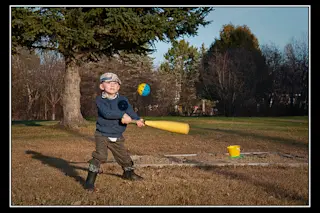Photo: flickr/DaMongManWe've all been told to "keep your eye on the ball" when learning baseball. Despite this sage advice, I was never able to actually hit the ball. Until now, I thought this was my fault (perhaps because I always performed "duck and cover" as the ball approached). But it turns out that really good baseball players don't actually watch the ball throughout its flight. In fact, baseballs can move fast enough to make that impossible. The authors of this study measured what elite players actually look at when at bat. They found that the batters turn their heads so as to be able to watch the ball, but instead use their eyes to predict where the ball might hit their bat. So maybe it wasn't actually my fault I was so terrible at baseball. (Please, just let me think that. Thanks.)The head tracks and gaze predicts: how the world's ...
Really good baseball players don't just "keep their eye on the ball".
Discover how elite baseball players use predictive eye movement strategies to enhance their batters gaze and interceptive skill.
More on Discover
Stay Curious
SubscribeTo The Magazine
Save up to 40% off the cover price when you subscribe to Discover magazine.
Subscribe













